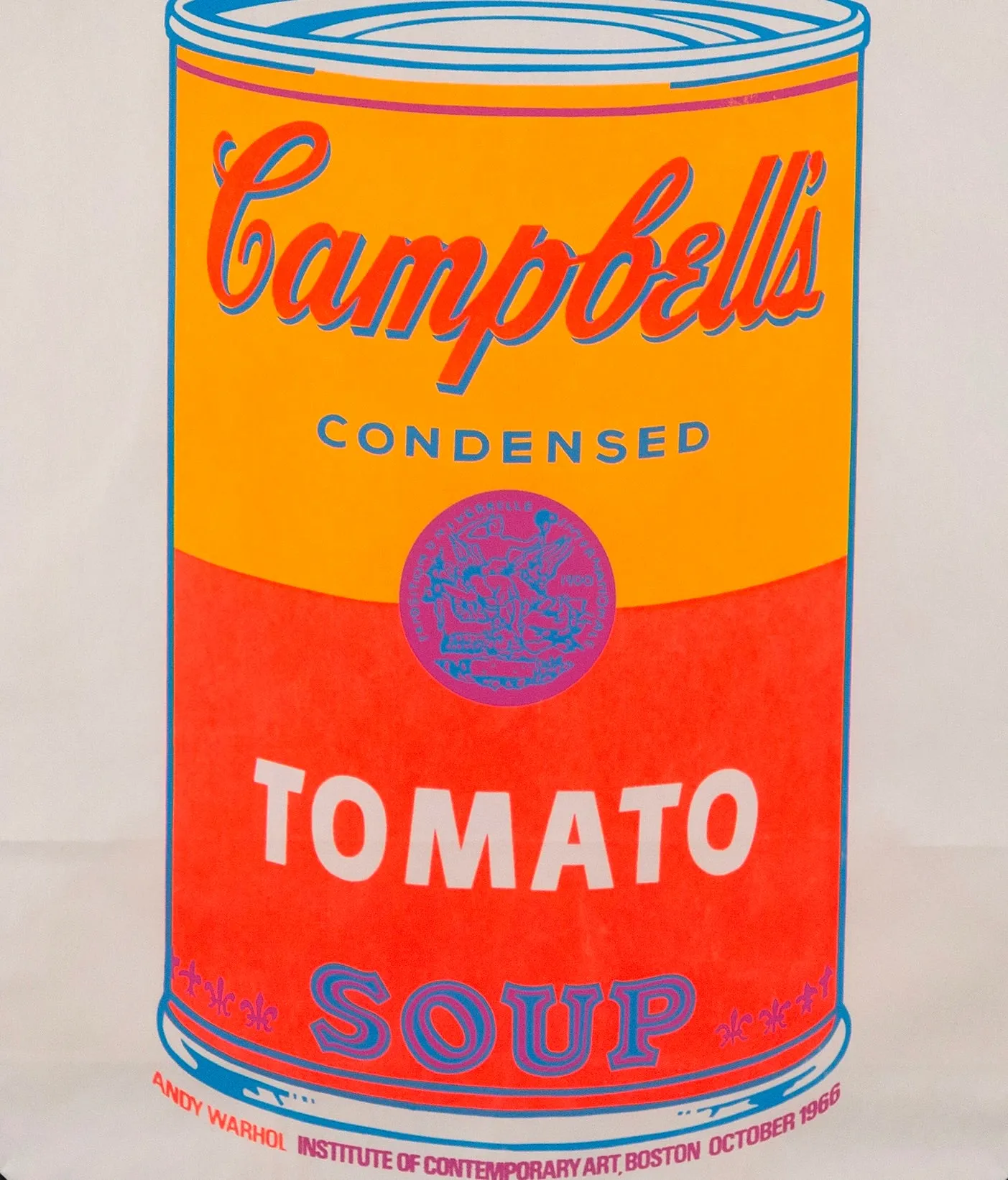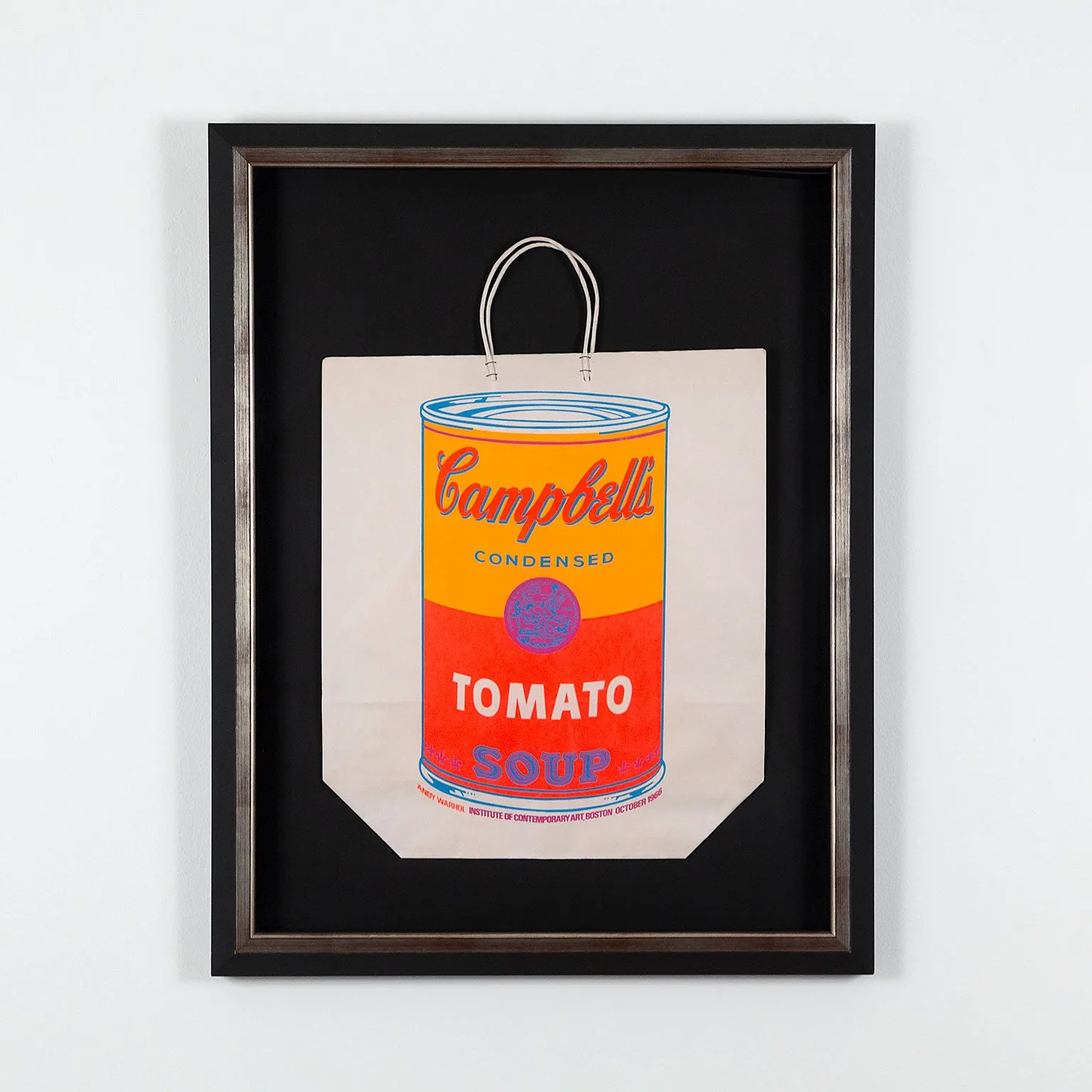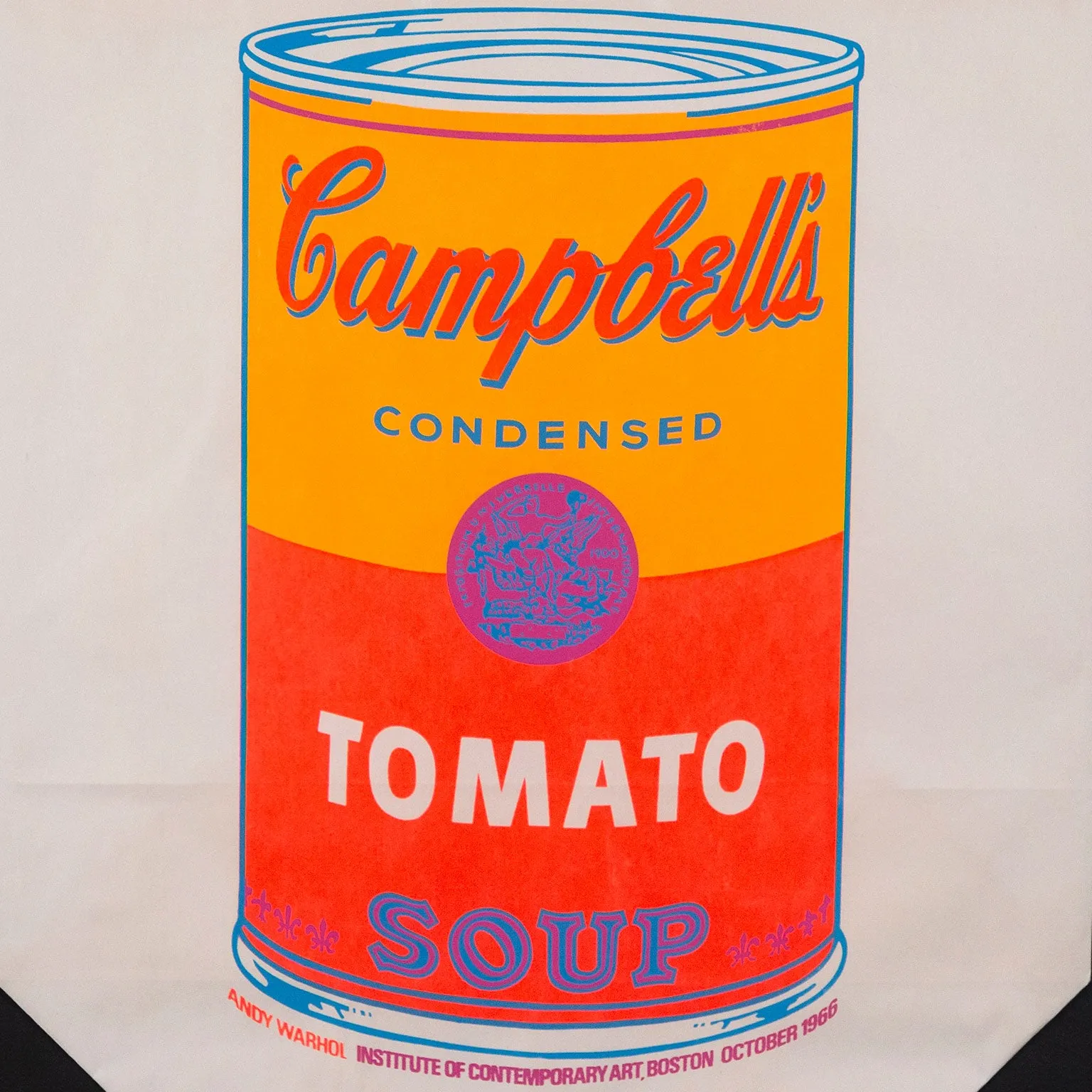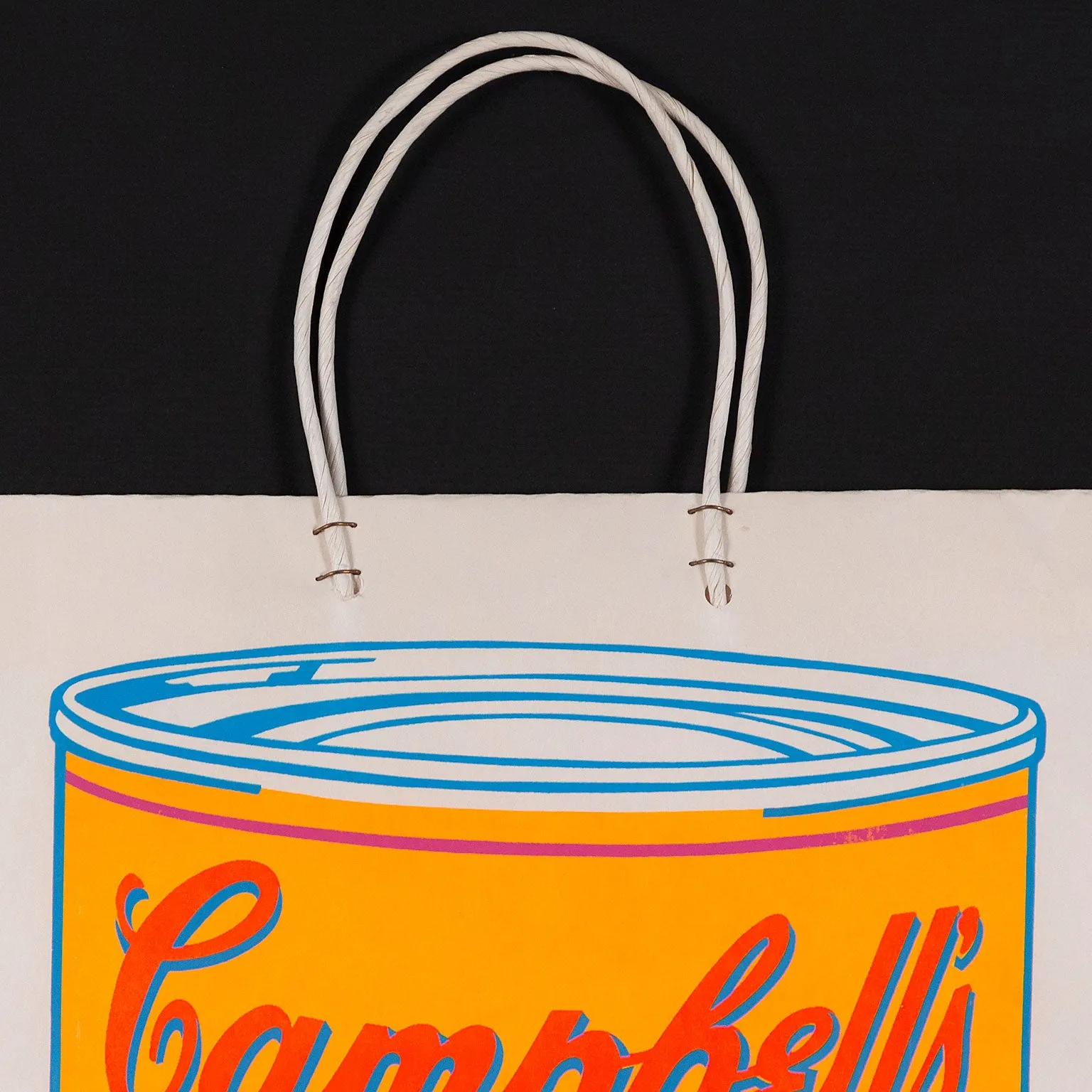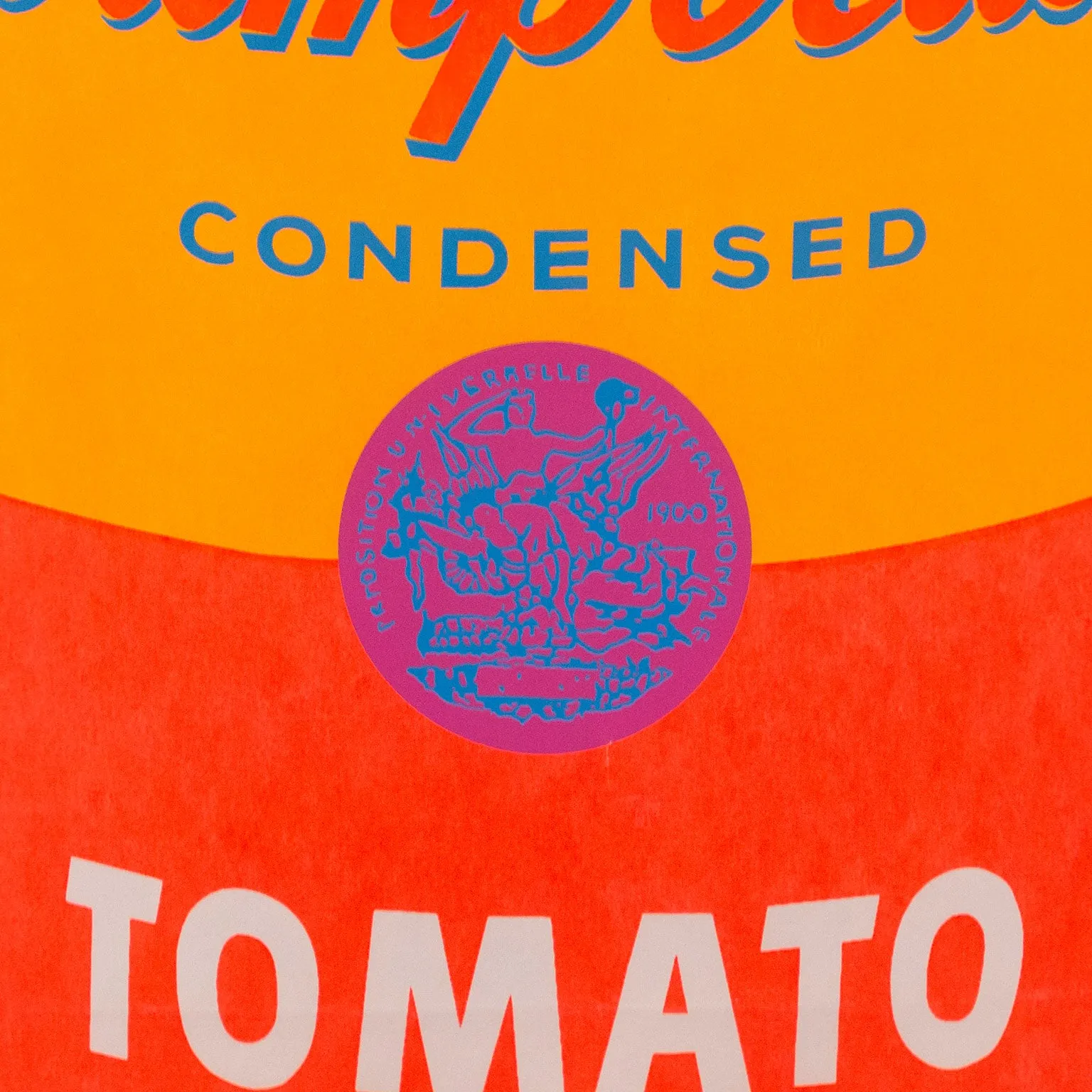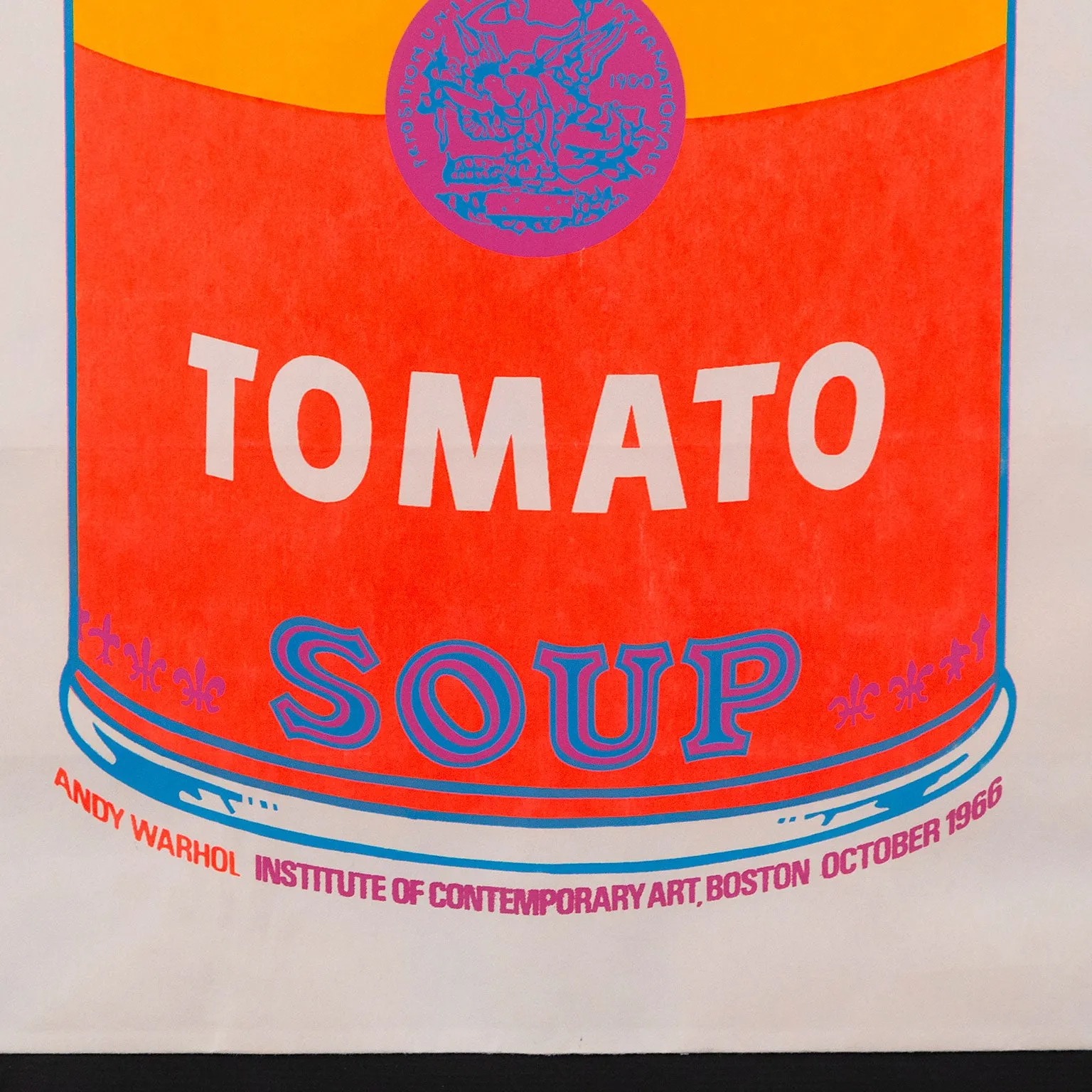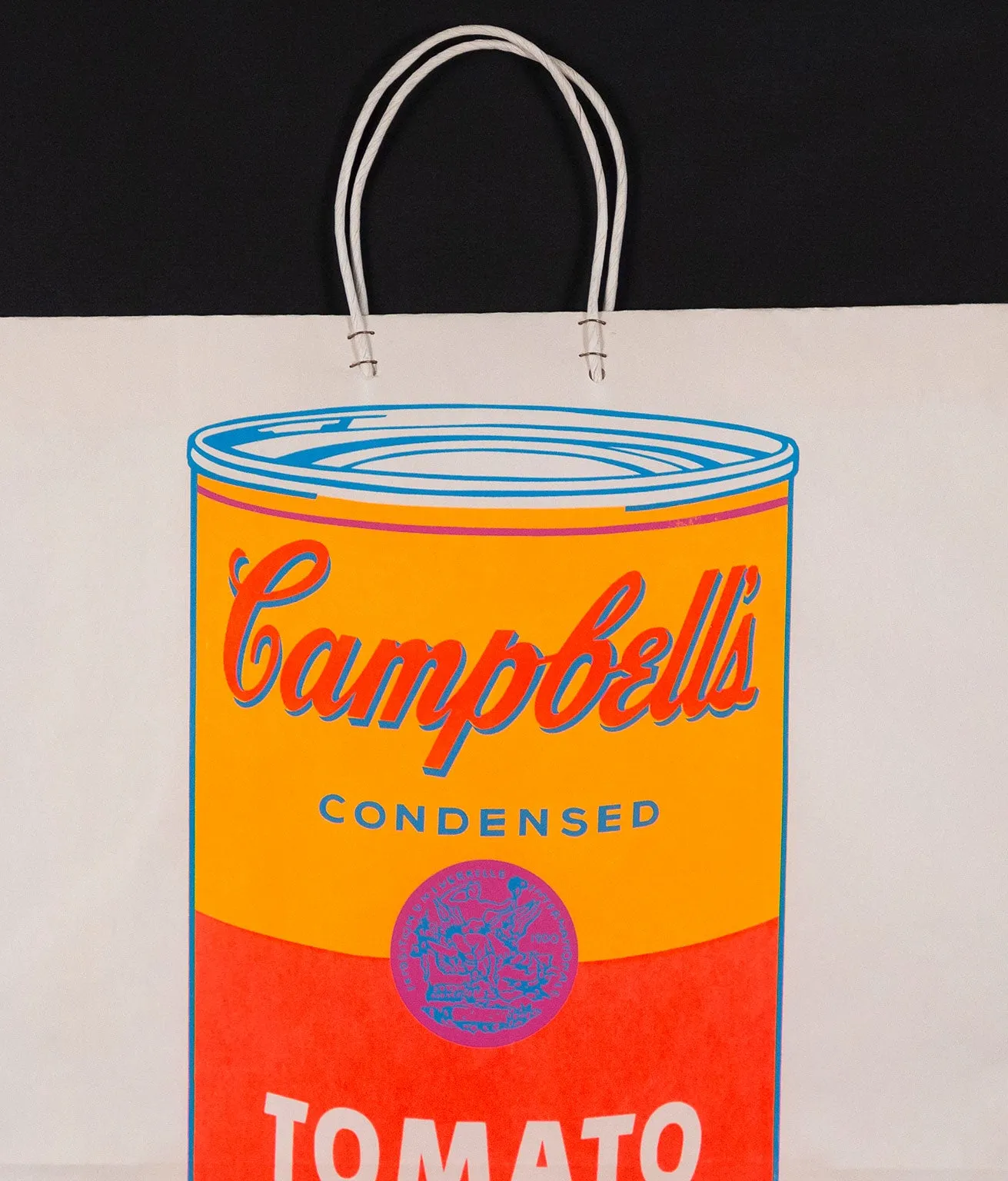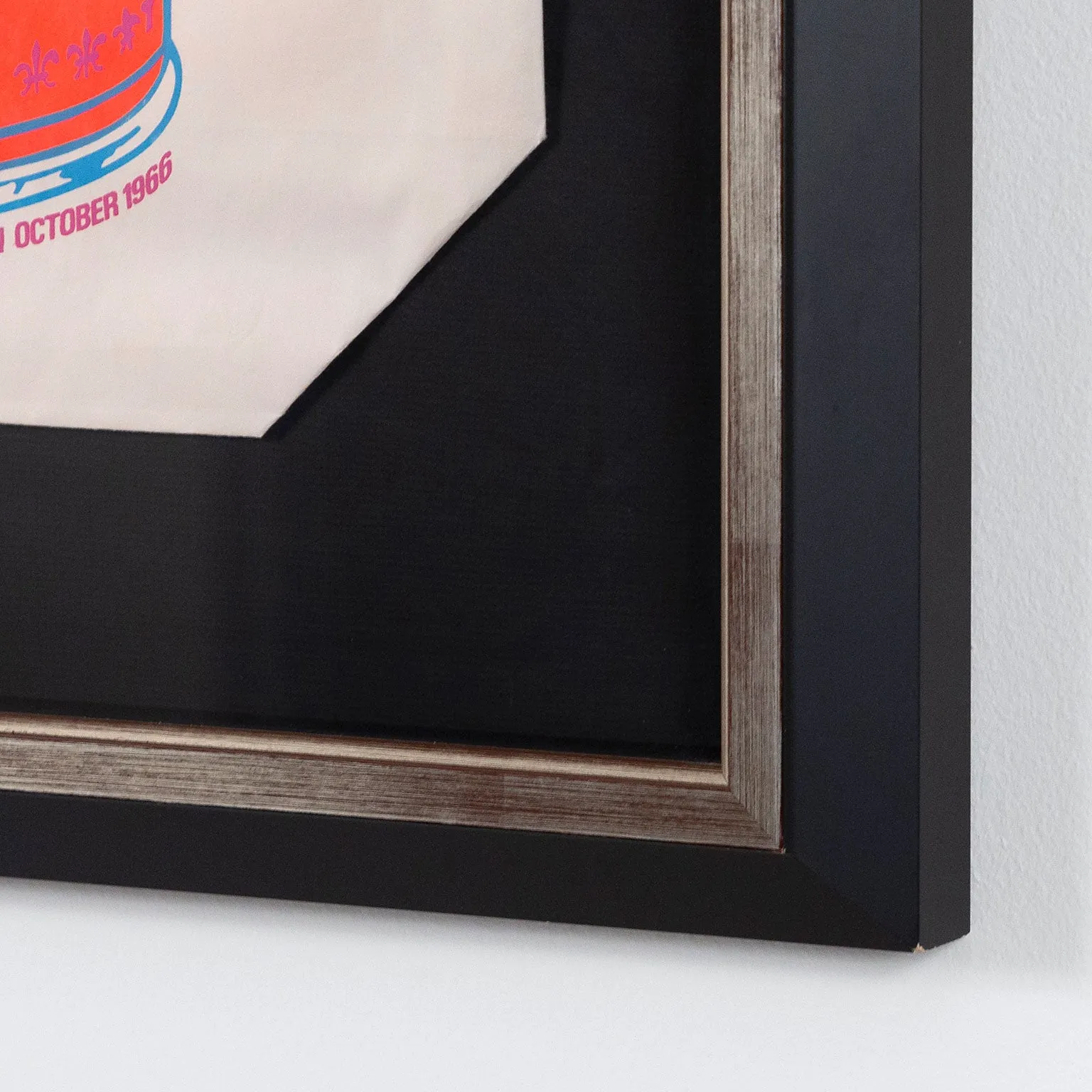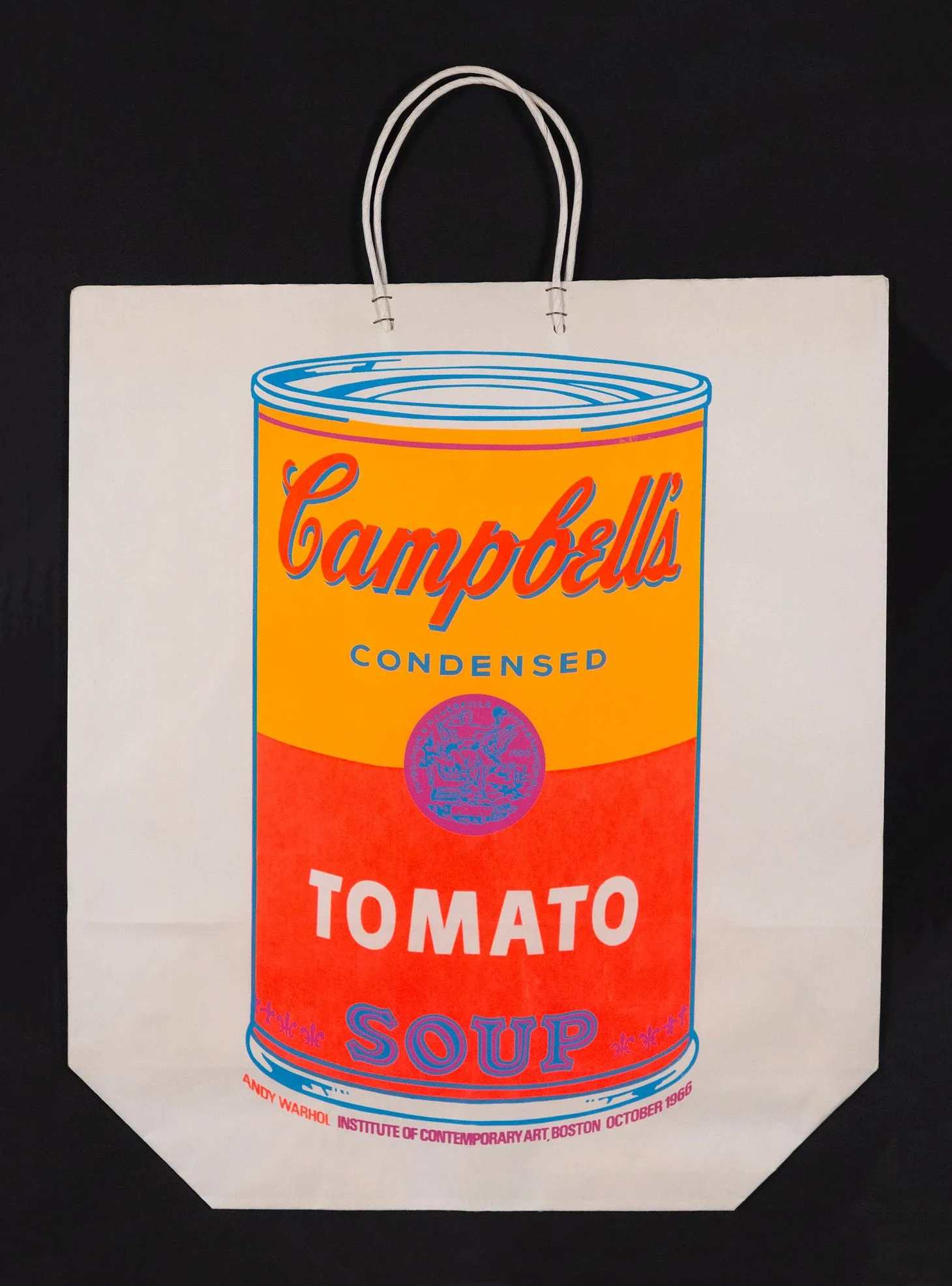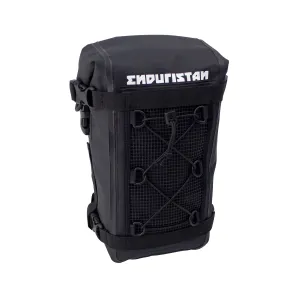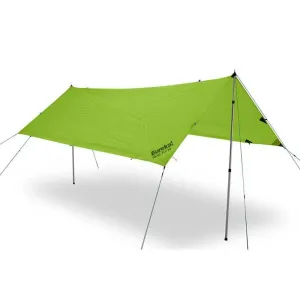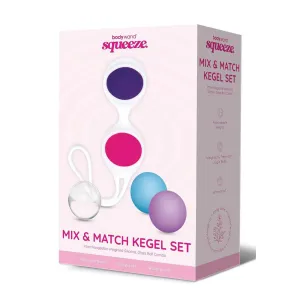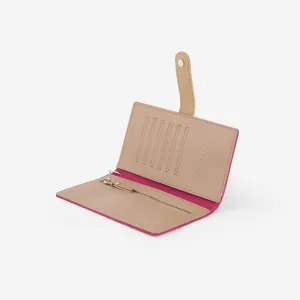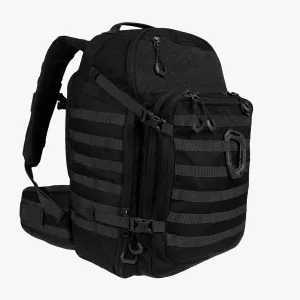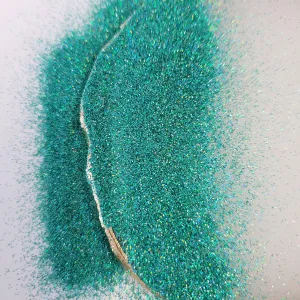In 1962 debuted his (soon to be infamous) Soup Can paintings as the Ferus Gallery in Los Angeles. While initially it was a commercial flop, in a short period of time the work would become an icon for the entire Pop Art movement and the artist himself.
Later that year Warhol would begin working with screenprinting, which both mechanized and revolutionized his art practice.
In the early 1960's, Warhol transitioned from painting soup cans by hand using stencils (or not) to printing directly on canvas.
In 1965, Warhol began to create soup cans in neon colors. In conjunction for an exhibit at the Institute of Fine Arts (Boston), he produced a limited number of silkscreen shopping bags with his beloved Campbell's soup in bold neon anchored by the company logo in royal blue and grape purple.
This shopping bag became the perfect symbol of the intersection between high culture and Pop Art, between consumerism and connoisseurship, and between scarcity and ubiquity.
It can't be emphasized enough how vital and ground-breaking the mid-sixties were for Warhol. In addition to the Soup Cans, Warhol also introduced images of (a recently deceased) Marilyn Monroe, singlehandedly reviving the genre of portraiture. He also began producing films and promoting The Velvet Underground. Needless to say, this era was his creative zenith.
As a result of all this activity, this work is highly sought-after by collectors as it is one of the only "affordable" works from the mid 60s.
This work can be found in numerous public collections including the and the (California) amongst others.
Questions about this piece? or call 1.416.704.1720
Screenprint in colors on shopping bag
USA, 1966
24"H 17"W (work)
32.5"H 25.5"W (framed)
Feldman & Schellmann II.4a

